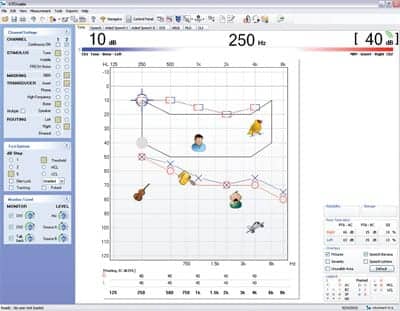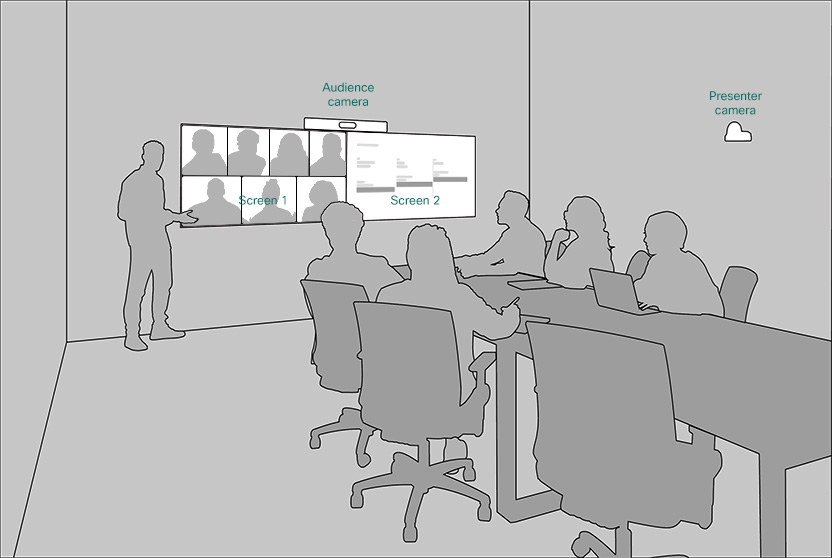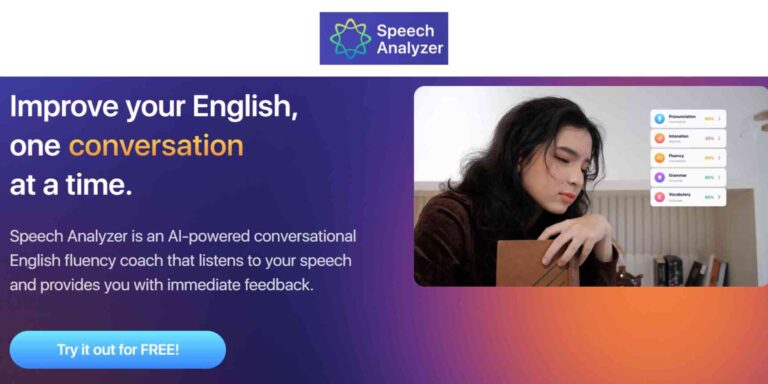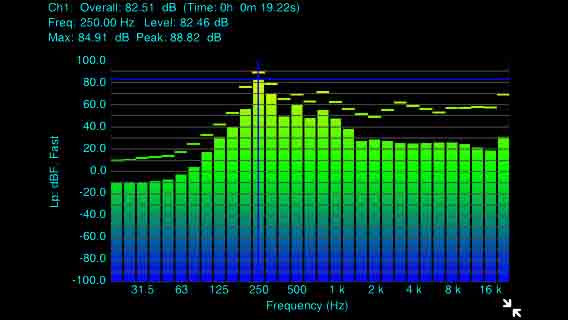Elevating Your Professional Image: The Powerful Connection Between Pronunciation and Executive Presence
The Hidden Impact of Pronunciation on Professional Perception
I've noticed throughout my career that how we speak often matters just as much as what we say. In today's competitive professional environment, the subtle nuances of our pronunciation can significantly influence how others perceive our competence, authority, and executive presence. Join me as I explore the fascinating relationship between pronunciation and professional image, and discover practical strategies to elevate your verbal communication skills.
Identifying Your Pronunciation Blind Spots
The challenge with pronunciation improvement is that we often don't hear our own mistakes. I've found that developing awareness of my personal pronunciation patterns is the essential first step toward improvement.

Self-Assessment Techniques
I regularly use these methods to evaluate my own pronunciation patterns:
flowchart TD
A[Record Yourself] -->|Listen & Analyze| B[Identify Patterns]
B --> C{Problem Areas}
C -->|Technical Terms| D[Industry Jargon]
C -->|Sound Issues| E[Specific Phonemes]
C -->|Speech Flow| F[Word Transitions]
D & E & F --> G[Create Practice List]
G --> H[Targeted Exercises]
H --> I[Re-record & Compare]
I --> J[Track Progress]
J -->|Continuous Improvement| A
Seeking Valuable Feedback
While self-assessment is valuable, external feedback is crucial. I've learned to structure conversations with trusted colleagues to get honest input about my speech patterns. When requesting feedback, I ask specific questions like:
- "Are there any words or terms you notice I consistently mispronounce?"
- "Do I speak clearly during presentations, or do you find yourself having to concentrate to understand me?"
- "Are there industry terms I say differently than others in our field?"
I've found that framing these conversations as professional development opportunities rather than personal critiques helps others feel comfortable providing honest feedback.
Technology-Assisted Analysis
Today's technology offers powerful tools for pronunciation improvement. I regularly use:
- Speech analysis applications that provide visual feedback on pronunciation
- AI-powered coaching platforms that identify patterns and suggest improvements
- AI voice-overs for presentations that model correct pronunciation
- Recording and playback tools to compare my pronunciation with reference examples
PageOn.ai's Deep Search functionality has been particularly valuable in my pronunciation journey. I can quickly find pronunciation guides and examples specific to my industry terminology, ensuring I'm using the accepted pronunciations for technical terms in my field.
Pronunciation Improvement Process
Creating Your Improvement Plan
Based on my assessment results, I develop a personalized improvement plan that addresses my specific pronunciation challenges. This includes:
- A prioritized list of words and sounds to focus on
- Industry-specific terminology that requires perfect pronunciation
- Daily practice exercises targeting specific pronunciation challenges
- Regular recording and self-assessment checkpoints
I've found that aligning my improvement goals with industry expectations is crucial. Different professional contexts have different pronunciation priorities—technical accuracy might be paramount in some fields, while smooth delivery might be more important in others.
Beyond Words: The Complete Vocal Package
I've learned that pronunciation doesn't exist in isolation—it's part of a complete vocal package that creates our professional sound signature. Perfect pronunciation combined with poor pacing or monotone delivery will still undermine your message.

The Elements of Vocal Delivery
flowchart TD
A[Complete Vocal Package] --> B[Pronunciation]
A --> C[Pace & Rhythm]
A --> D[Tone & Pitch]
A --> E[Vocal Variety]
A --> F[Breath Control]
A --> G[Filler Words]
B --> B1[Articulation]
B --> B2[Accent Management]
B --> B3[Word Stress]
C --> C1[Speaking Speed]
C --> C2[Strategic Pausing]
C --> C3[Rhythmic Patterns]
D --> D1[Emotional Tone]
D --> D2[Pitch Variation]
D --> D3[Resonance]
E --> E1[Volume Changes]
E --> E2[Emphasis Techniques]
E --> E3[Dynamic Range]
F --> F1[Breath Support]
F --> F2[Phrasing]
F --> F3[Stamina]
G --> G1[Um/Uh Reduction]
G --> G2[Verbal Tics]
G --> G3[Pause Management]
I pay particular attention to how these elements work together to create my overall vocal impression. For example, proper pronunciation requires adequate breath control—without it, even well-practiced words can become unclear at the end of a long sentence.
The Filler Word Challenge
In my experience, filler words like "um," "uh," "like," and "you know" can significantly undermine perceived competence and confidence. I've found that these verbal habits often increase when I'm uncertain about pronunciation or searching for the right term.
My strategy for reducing filler words includes:
- Practicing comfortable silence instead of filling pauses
- Recording and counting filler words to build awareness
- Preparing thoroughly to reduce verbal searching
- Using strategic pausing as a replacement behavior
The Accent Question
Regional accents present an interesting professional consideration. I believe that accents can add character and authenticity to speech—they're part of our identity. However, I've also found that extreme regional pronunciations can sometimes create comprehension challenges in global business contexts.
My approach is not to eliminate accents but to ensure clarity. I focus on:
- Identifying any accent-specific pronunciations that commonly cause confusion
- Ensuring key terms and concepts are pronounced with maximum clarity
- Adapting pronunciation slightly in international contexts when needed for comprehension
- Maintaining my authentic voice while ensuring my message is accessible
Using PageOn.ai's AI Blocks feature, I've created visual representations of my speech patterns, helping me identify areas where my accent might affect clarity and develop targeted practice exercises for those specific sounds.
Impact of Vocal Elements on Listener Perception
The Breath-Pronunciation Connection
I've discovered that breath control is the foundation of clear pronunciation. Without proper breathing techniques, even well-practiced pronunciations can deteriorate, especially during longer presentations or high-pressure situations.
My daily practice includes:
- Diaphragmatic breathing exercises to increase breath support
- Practicing difficult pronunciations with deliberate breath management
- Marking breathing points in presentation notes
- Recording long passages to identify where pronunciation suffers due to breath issues
By addressing these interconnected elements of vocal delivery, I've been able to create a more cohesive and professional vocal presence that supports rather than detracts from my message.
Pronunciation in Presentation Contexts
I've found that different presentation environments create unique pronunciation challenges. The skills required for clear pronunciation in a boardroom differ significantly from those needed for virtual meetings or large auditorium presentations.

Virtual vs. In-Person Pronunciation Considerations
| Factor | Virtual Meetings | In-Person Presentations |
|---|---|---|
| Audio Quality | Heavily dependent on microphone quality and internet connection; requires extra pronunciation clarity | Affected by room acoustics and projection ability; more natural feedback loop |
| Pace | Typically requires slower pace due to potential latency and reduced non-verbal cues | Can be more dynamic; audience visual feedback allows for pace adjustment |
| Articulation | Requires over-articulation of certain sounds that may be lost in digital transmission | More natural articulation works, but room size may require greater projection |
| Energy | Needs 15-20% more energy to overcome the "digital divide" | Natural energy translates more effectively; room size dictates projection needs |
I've learned that virtual presentations in particular require heightened attention to pronunciation. Without the full range of non-verbal cues, listeners rely more heavily on audio quality and clarity to process information.
Pronunciation and Audience Engagement
Clear pronunciation directly impacts how well audiences retain information. When I've struggled with certain technical terms or names during presentations, I've noticed immediate disengagement signals from my audience:
- Confused facial expressions
- Increased note-taking (trying to decipher what was said)
- Side conversations (asking neighbors for clarification)
- Reduced eye contact and attention
Conversely, when I pronounce terms with confidence and clarity, I see improved engagement, more thoughtful questions, and better information retention.
Maintaining Pronunciation Under Pressure
High-stakes presentations often create pronunciation challenges as stress affects our vocal mechanisms. I use these techniques to maintain pronunciation quality even under pressure:
flowchart TD
A[Pressure Situations] --> B{Preparation Strategies}
B --> C[Pre-Practice Key Terms]
B --> D[Create Pronunciation Notes]
B --> E[Breath Management Plan]
B --> F[Stress Reduction Techniques]
C --> G[Record & Review]
C --> H[Tongue Twisters]
D --> I[Phonetic Spelling in Notes]
D --> J[Stress Marks on Syllables]
E --> K[Mark Breathing Points]
E --> L[Pre-Speech Breathing]
F --> M[Visualization]
F --> N[Power Poses]
G & H & I & J & K & L & M & N --> O[Confident Delivery]
Pronunciation-Focused Speaking Notes
I've developed a system for creating speaking notes that support clear pronunciation of complex terms:
- Phonetic spellings for difficult words (e.g., "epitome" as "eh-PIT-oh-mee")
- Syllable stress indicators using bold or underlined text
- Pause markers to ensure adequate breath support before complex terms
- Alternative phrasings if a particular term proves problematic
PageOn.ai has been invaluable for creating visual pronunciation guides for challenging industry terminology. Using its visualization tools, I can create custom reference materials that combine phonetic information with visual cues, making it easier to internalize correct pronunciations for text to speech PowerPoint presentation preparation.
Pronunciation Impact on Audience Retention
Building a Comprehensive Pronunciation Improvement Strategy
I've found that sustainable pronunciation improvement requires a structured approach. Random practice yields random results, while a systematic strategy produces consistent progress.

Creating a Personalized Development Plan
My pronunciation development plan follows this structure:
flowchart TD
A[Assessment Phase] --> B[Goal Setting]
B --> C[Prioritization]
C --> D[Daily Practice Regimen]
D --> E[Weekly Evaluation]
E --> F[Adjustment]
F --> D
A --> A1[Record Baseline]
A --> A2[Identify Issues]
A --> A3[Seek Feedback]
B --> B1[Short-term Goals]
B --> B2[Long-term Goals]
B --> B3[Measurable Metrics]
C --> C1[High-Impact Terms]
C --> C2[Frequent Challenges]
C --> C3[Industry Specifics]
D --> D1[Warm-up Routines]
D --> D2[Targeted Exercises]
D --> D3[Real Context Practice]
E --> E1[Self-Recording]
E --> E2[Peer Feedback]
E --> E3[Progress Tracking]
Setting measurable goals has been crucial to my progress. Rather than vague aims like "improve pronunciation," I set specific targets such as:
- Master the pronunciation of our top 10 product names by next quarter
- Reduce pronunciation-related clarification questions in client meetings by 75%
- Eliminate specific problematic sounds (like "th" or "r") in professional contexts
- Increase audience comprehension scores for technical presentations by 25%
Daily Exercises for Articulation Strength
I've incorporated these daily exercises into my routine:
- Tongue Twisters: "Unique New York" repeated with increasing speed
- Articulation Practice: Exaggerated pronunciation of challenging consonant combinations
- Reading Aloud: 10 minutes daily with focus on clarity and precision
- Slow-Motion Speaking: Deliberately slowing down speech to perfect individual sounds
- Industry Terminology Drills: Practicing field-specific vocabulary in various contexts
Pronunciation Improvement Timeline
The Role of Recording and Playback
Recording my speech has been one of my most valuable improvement tools. I follow this process:
- Record a baseline sample of challenging material
- Listen critically, noting specific pronunciation issues
- Practice targeted improvements for those specific issues
- Record again using the same material
- Compare recordings to identify progress and persistent challenges
- Repeat the cycle focusing on remaining issues
This objective feedback loop has accelerated my improvement by providing concrete evidence of both progress and areas needing continued work.
Resources for Ongoing Improvement
I regularly leverage these resources to support my pronunciation development:
- Pronunciation dictionaries and audio references
- Speech pathology exercises for specific sound challenges
- Industry glossaries with pronunciation guides
- Professional coaching for personalized feedback
- AI text-to-speech celebrity voices for modeling excellent pronunciation
I've found PageOn.ai particularly valuable for developing custom pronunciation practice materials. Its agentic capabilities allow me to create industry-specific exercises that target my unique challenges while incorporating visual elements that reinforce proper pronunciation patterns.
From Pronunciation to Full Executive Presence
I've discovered that refined pronunciation serves as a foundation for broader communication excellence. When I'm confident in my pronunciation, I can focus more attention on other aspects of executive presence.

The Complete Executive Presence Package
flowchart TD
A[Executive Presence] --> B[Verbal Communication]
A --> C[Visual Presentation]
A --> D[Personal Energy]
A --> E[Situational Awareness]
A --> F[Knowledge Authority]
B --> B1[Pronunciation]
B --> B2[Vocabulary]
B --> B3[Storytelling]
B --> B4[Question Handling]
C --> C1[Body Language]
C --> C2[Appearance]
C --> C3[Visual Aids]
C --> C4[Environment Management]
D --> D1[Confidence]
D --> D2[Authenticity]
D --> D3[Emotional Intelligence]
D --> D4[Adaptability]
E --> E1[Room Reading]
E --> E2[Cultural Awareness]
E --> E3[Power Dynamics]
E --> E4[Timing Sensitivity]
F --> F1[Subject Expertise]
F --> F2[Industry Awareness]
F --> F3[Strategic Thinking]
F --> F4[Thought Leadership]
I've learned that clear pronunciation creates a virtuous cycle for other aspects of executive presence:
- When I pronounce words confidently, my overall confidence increases
- Clear speech encourages better posture and breathing
- Precise pronunciation creates the impression of precision in thinking
- Articulate speech commands attention, enhancing the impact of body language
Integrating Verbal and Visual Elements
Executive presence requires alignment between what we say and how we appear while saying it. I focus on creating congruence between:
- Pronunciation precision and precise gestures
- Speech rhythm and movement patterns
- Vocal emphasis and visual emphasis (through gestures or visual aids)
- Vocal energy and facial expressions
When these elements align, the overall impression is one of authenticity and congruence—key components of executive presence.
Executive Transformation Case Studies
I've been inspired by several executives who transformed their presence through speech refinement:
Case Study 1: Technical Expert to C-Suite
A brilliant technical director with a heavy regional accent was repeatedly passed over for executive promotion. After six months of focused pronunciation work—not eliminating his accent but ensuring clarity and precision—he secured a C-level position. His technical expertise remained the same, but his ability to communicate it transformed.
Case Study 2: International Executive Transition
A senior executive transitioning from regional to global leadership invested in pronunciation refinement for international English. By focusing on universally clear pronunciation rather than attempting to eliminate her accent entirely, she maintained authenticity while ensuring global comprehension. This balanced approach earned respect across diverse cultural contexts.
Elements of Executive Presence
Measuring Professional Impact
I track the impact of pronunciation improvements on professional outcomes through these metrics:
- Frequency of requests to repeat information (decreasing over time)
- Audience engagement metrics during presentations
- Feedback specificity (shifting from comments about delivery to content)
- Leadership opportunities offered
- Influence in cross-functional settings
Using PageOn.ai's visualization tools, I've created a comprehensive framework that aligns my verbal and visual presentation elements. This integrated approach ensures that my pronunciation improvements complement my overall executive presence rather than existing in isolation.
Technological Tools for Modern Pronunciation Development
I've embraced the technological revolution in pronunciation training. Today's digital tools offer unprecedented opportunities for targeted, efficient improvement.

AI-Powered Speech Analysis
I've found tremendous value in AI applications that provide immediate feedback on pronunciation. These tools offer:
- Real-time analysis of pronunciation accuracy
- Visual representations of speech patterns
- Comparison with native speaker models
- Personalized improvement recommendations
- Progress tracking over time
The immediate feedback loop these tools provide has accelerated my improvement significantly compared to traditional methods.
Text-to-Speech for Pronunciation Modeling
Text-to-speech technology has become sophisticated enough to serve as an excellent pronunciation model. I use these tools to:
- Hear correct pronunciations of unfamiliar terms
- Create practice materials with challenging vocabulary
- Generate industry-specific pronunciation guides
- Compare multiple pronunciation variants
When preparing for important presentations, I use ChatGPT presentation skills tools to generate scripts with challenging terminology, then use text-to-speech to create practice materials.
Technology Tool Effectiveness
Voice Assistants as Pronunciation Coaches
I've found an unexpected pronunciation resource in everyday voice assistants. By intentionally using them for pronunciation practice, I gain several benefits:
- Immediate feedback on clarity (if the assistant understands me, my pronunciation is likely clear)
- Low-pressure practice environment
- Opportunity to hear correct pronunciations of requested terms
- Convenient practice during daily activities
This "pronunciation in the wild" approach complements more structured practice sessions.
Visual Learning Materials
PageOn.ai has revolutionized my approach to pronunciation by transforming traditional guides into engaging visual learning materials. The platform allows me to:
- Create visual pronunciation maps showing mouth positions for challenging sounds
- Develop interactive diagrams linking technical concepts with their pronunciations
- Design presentation materials that subtly reinforce correct pronunciation of key terms
- Generate visual mnemonics for commonly mispronounced words
These visual tools have proven particularly effective for mastering industry-specific terminology, where both conceptual understanding and pronunciation accuracy are crucial for professional credibility.
flowchart TD
A[Pronunciation Technology Ecosystem] --> B[Input Tools]
A --> C[Analysis Tools]
A --> D[Feedback Systems]
A --> E[Practice Platforms]
A --> F[Integration Tools]
B --> B1[Recording Apps]
B --> B2[Voice Recognition]
B --> B3[Live Transcription]
C --> C1[AI Speech Analysis]
C --> C2[Pattern Recognition]
C --> C3[Accent Classification]
D --> D1[Visual Feedback]
D --> D2[Audio Comparison]
D --> D3[Progress Metrics]
E --> E1[Guided Exercises]
E --> E2[Contextual Practice]
E --> E3[Simulation Scenarios]
F --> F1[Presentation Software]
F --> F2[Meeting Platforms]
F --> F3[Learning Management]
F1 --> G[PageOn.ai]
G --> G1[Visual Pronunciation Guides]
G --> G2[Integrated Practice Materials]
G --> G3[Presentation Support Tools]
Transform Your Professional Presence with PageOn.ai
Ready to elevate your pronunciation and executive presence? PageOn.ai's visualization tools can help you create stunning visual learning materials, presentation aids, and practice resources tailored to your specific pronunciation needs.
Start Creating with PageOn.ai TodayFrom Pronunciation to Full Professional Presence
Throughout my professional journey, I've discovered that pronunciation is far more than a technical skill—it's a fundamental building block of executive presence and professional credibility. By investing in pronunciation improvement, we're actually investing in our overall communication effectiveness and leadership potential.
The good news is that pronunciation is highly teachable. With consistent practice, appropriate tools, and a structured approach, anyone can significantly enhance their pronunciation skills and, by extension, their professional presence.
I encourage you to begin your pronunciation improvement journey today. Start by recording yourself speaking in a professional context, identify one or two specific areas for improvement, and develop a regular practice routine. The professional dividends will far exceed the investment of time and effort.
And remember, tools like PageOn.ai can transform this process from a tedious exercise into an engaging visual learning experience. By creating custom visualization materials that address your specific pronunciation challenges, you can accelerate your progress and integrate improved pronunciation into your complete professional presence package.
Your voice is a powerful professional tool. By refining how you speak, you can ensure your valuable ideas and expertise receive the attention and respect they deserve.
You Might Also Like
Revolutionizing Document Conversion: Drag-and-Drop Solutions for Workflow Efficiency
Discover how drag-and-drop document conversion solutions transform workflow efficiency, reduce errors, and save 60%+ time. Learn implementation strategies and future trends.
Revolutionizing 3D Graphics Creation with AI: Transform Visual Design Workflows
Discover how AI is transforming 3D graphics creation across industries. Learn about text-to-3D, image-to-3D technologies, and practical workflows for designers and creators.
10 Hidden Google Workspace Marketplace Gems for Transforming Your Presentations
Discover 10 powerful Google Workspace Marketplace add-ons that will revolutionize how you create, deliver, and collaborate on presentations. Unlock hidden gems for presenters.
Creating Impactful Cultural Presentations: AI-Driven Visual Storytelling for Cultural Expression
Discover how to create authentic cultural presentations using AI-driven visual storytelling techniques. Learn to transform cultural concepts into engaging visual narratives with PageOn.ai.

